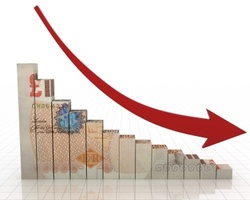
The year-on-year inflation rate stood at 16.4 per cent in January, down by 0.6 percentage points from 17 per cent recorded in December on stable food prices and drop in oil prices.
The rate of inflation for January 2015 is the percentage change in the consumer price index, over the 12-month period, from January 2014 to January 2015.
Mr Baah Wadieh, Deputy Government Statistician, who announced this at a media briefing in Accra on Wednesday, said the monthly change rate for January was 3.4 per cent, compared to 1 per cent recorded for December 2014.
“This means that the change in the general price level went up by 3.4% between December 2014 and January 2015,” he explained.
Mr Wadieh said the food inflation rate for January 2015 was 6.9 per cent, compared with 6.8 per cent recorded in December 2014.
The non-food inflation rate for January 2015 was 23.0 per cent down from 23.9 per cent recorded in December 2014.
“The year-on-year non-food inflation rate is more than three times higher than the food inflation rate,” Mr Wadieh said, adding that inflation rate for imported items which was 23.2 per cent is more than one and half times higher than the inflation rate for locally produced items at 13.9 per cent.
He said the main drivers for the non-food inflation rate were housing, water, electricity, gas and other fuels, which stood at 32.3 per cent and transport at 31.1 per cent.
The price drivers for the food inflation rate were coffee, tea and cocoa, mineral water, soft drinks, fruits and vegetable juices, among others.
The Central Region recorded the highest regional year-on-year inflation rate of 18.4 per cent, while the Upper West Region recorded the lowest of 12.8 per cent.
Five regions, namely, the Central, Volta, Ashanti, Greater-Accra and Eastern, recorded inflation rates above the national average of 16.4 per cent.